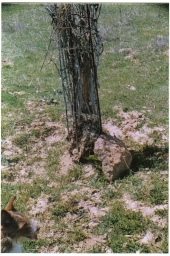








The ultimate goal of farming is not the growing of crops, but the cultivation and perfection of human beings. - Masanobu Fukuoka
















we have to forest our farms and farm our forests
 1
1








Jordan Lowery wrote:
I prefer willows that coppice well for animal fodder systems.
My project thread
Agriculture collects solar energy two-dimensionally; but silviculture collects it three dimensionally.












Cj Verde wrote:
Jordan Lowery wrote:
I prefer willows that coppice well for animal fodder systems.
Could you be more specific in the type/name of willow that works for fodder? I was just going to use the weeping willow on my property.




My project thread
Agriculture collects solar energy two-dimensionally; but silviculture collects it three dimensionally.








Brenda
Bloom where you are planted.
http://restfultrailsfoodforestgarden.blogspot.com/








"The eyes of the future are looking back at us and they are praying for us to see beyond our own time."
--- by Terry Tempest Williams, naturalist




Renate Haeckler wrote:I'm in Kentucky.
My project thread
Agriculture collects solar energy two-dimensionally; but silviculture collects it three dimensionally.









 )
)






Works at a residential alternative high school in the Himalayas SECMOL.org . "Back home" is Cape Cod, E Coast USA.
 1
1





|
It will give me the powers of the gods. Not bad for a tiny ad:
The new permaculture playing cards kickstarter is now live!
https://www.kickstarter.com/projects/paulwheaton/garden-cards
|



